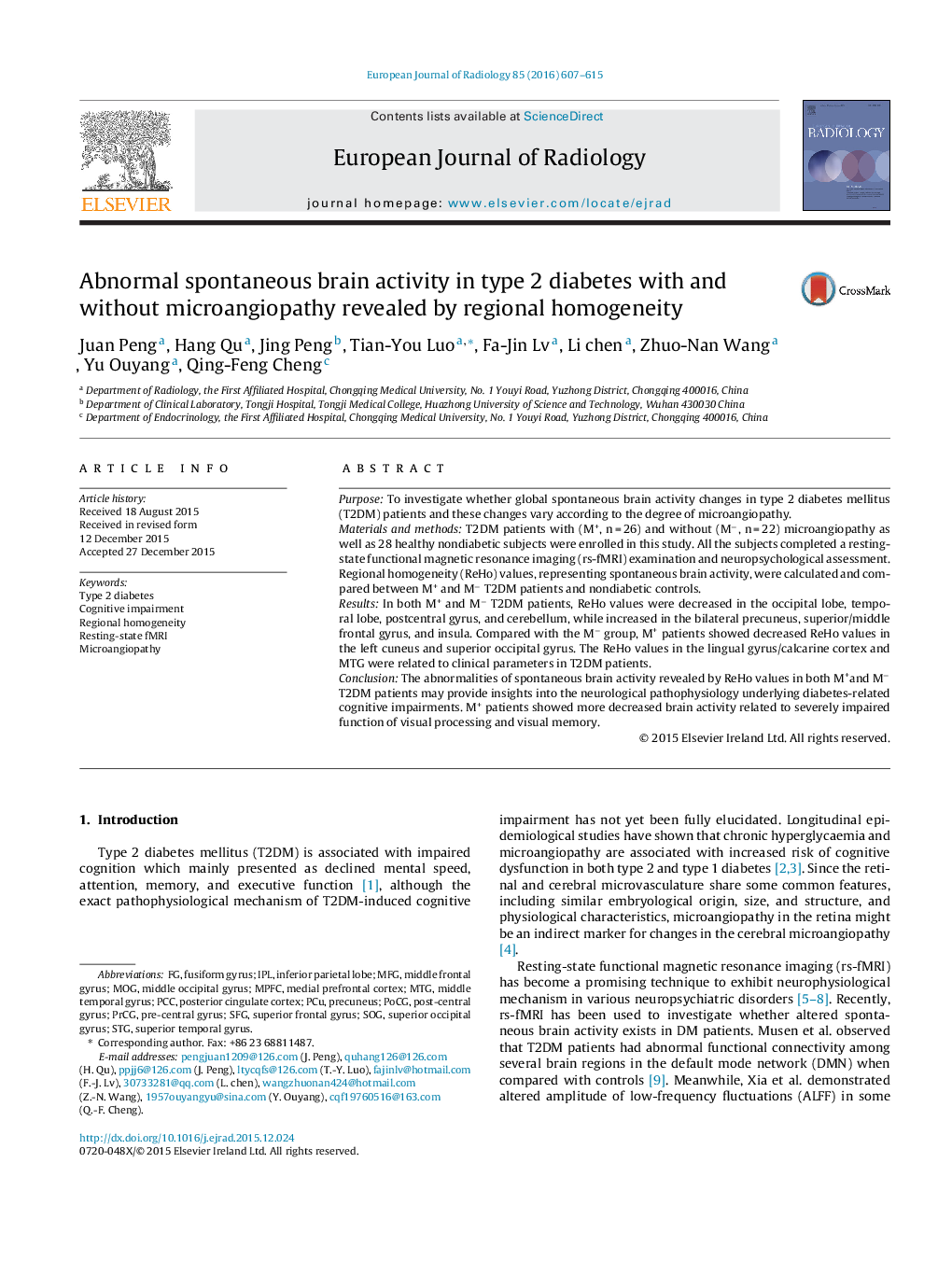| Article ID | Journal | Published Year | Pages | File Type |
|---|---|---|---|---|
| 4225052 | European Journal of Radiology | 2016 | 9 Pages |
•In both M+ and M− T2DM patients, ReHo values were decreased and increased in selected brain regions.•Aberrant ReHo values in T2DM patients were correlated with neuropsychological impairments in selected brain regions.•M+ patients showed more decreased brain activity related to impaired function of visual processing and visual memory.
PurposeTo investigate whether global spontaneous brain activity changes in type 2 diabetes mellitus (T2DM) patients and these changes vary according to the degree of microangiopathy.Materials and methodsT2DM patients with (M+, n = 26) and without (M−, n = 22) microangiopathy as well as 28 healthy nondiabetic subjects were enrolled in this study. All the subjects completed a resting-state functional magnetic resonance imaging (rs-fMRI) examination and neuropsychological assessment. Regional homogeneity (ReHo) values, representing spontaneous brain activity, were calculated and compared between M+ and M− T2DM patients and nondiabetic controls.ResultsIn both M+ and M− T2DM patients, ReHo values were decreased in the occipital lobe, temporal lobe, postcentral gyrus, and cerebellum, while increased in the bilateral precuneus, superior/middle frontal gyrus, and insula. Compared with the M− group, M+ patients showed decreased ReHo values in the left cuneus and superior occipital gyrus. The ReHo values in the lingual gyrus/calcarine cortex and MTG were related to clinical parameters in T2DM patients.ConclusionThe abnormalities of spontaneous brain activity revealed by ReHo values in both M+and M− T2DM patients may provide insights into the neurological pathophysiology underlying diabetes-related cognitive impairments. M+ patients showed more decreased brain activity related to severely impaired function of visual processing and visual memory.
